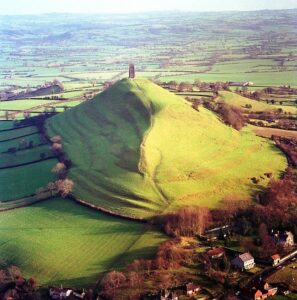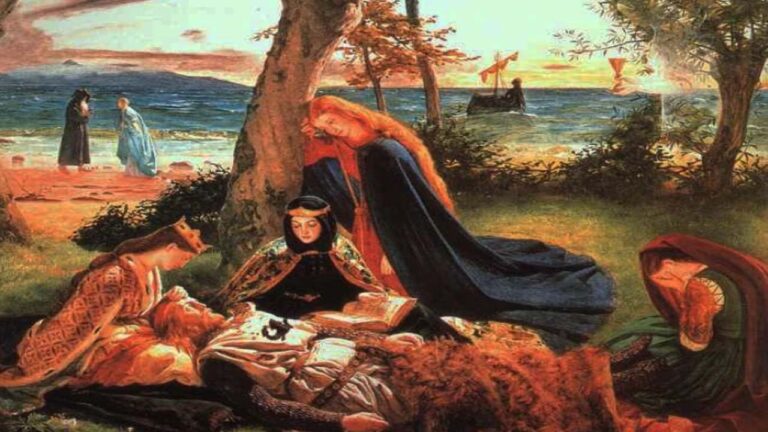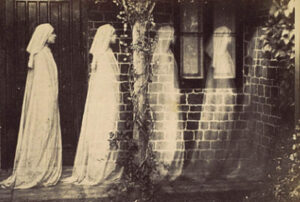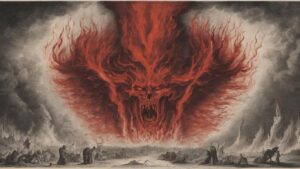Table of Contents
What Is Avalon?
Avalon holds a legendary and mystical status, frequently linked with Arthurian legend and Celtic mythology. It is most famously known as the place where King Arthur is said to have recovered from his wounds after the Battle of Camlann. People often describe Avalon as a location for healing and rejuvenation, sometimes portraying it as either an earthly paradise or an otherworldly realm.
Key features and aspects associated with Avalon:
Healing and Rejuvenation: Portrayed as a place with magical healing properties, Avalon is where King Arthur is said to have recuperated from battle injuries.
Connection to Arthurian Legend: Avalon plays a significant role in Arthurian legend. According to some versions, Arthur was taken to Avalon after suffering mortal wounds, with a belief that he might return in Britain’s time of need.
Mysterious and Otherworldly: Often depicted as a mysterious and enchanted island, Avalon is sometimes described as a separate realm or a place existing between earthly and spiritual dimensions. It is occasionally referred to as the “Isle of Apples.”
Lady of the Lake: In some Arthurian legends, Avalon is associated with the Lady of the Lake, a mystical figure involved in giving Arthur the sword Excalibur. The Lady of the Lake is sometimes said to dwell on or near Avalon.
Symbolic Meaning: Avalon has gained symbolic meaning in literature and mythology, representing hope, renewal, and a place of transcendence. It symbolizes a utopian or idyllic sanctuary.
The concept of Avalon has evolved over time, and different versions of Arthurian legend and Celtic mythology may present variations in the details and significance of Avalon. The tales of Avalon continue to captivate the imagination, remaining an integral part of the rich tapestry of Arthurian lore.
Source and Etymology
The concept of Avalon and its association with Arthurian legend has ancient roots, traced through a combination of medieval texts, folklore, and literary traditions. A few sources and the etymology of Avalon are notable:
Sources:
Geoffrey of Monmouth (Historia Regum Britanniae): Mentioned in Geoffrey of Monmouth’s “Historia Regum Britanniae” (History of the Kings of Britain) written around 1136, Avalon is introduced as the place where Arthur is taken to heal after the Battle of Camlann. Geoffrey’s work significantly influenced Arthurian legend.
Chretien de Troyes (Arthurian Romances): The French poet Chretien de Troyes, in works like “Perceval, the Story of the Grail” from the late 12th century, contributes to the development of the Avalon myth. Chretien’s works introduce elements associated with the mystical island.
Welsh Tradition (Preiddeu Annwfn): In Welsh tradition, similarities exist between Avalon and Otherworldly realms, particularly in texts like the “Preiddeu Annwfn” (Spoils of Annwfn), describing a journey to an otherworldly realm associated with King Arthur.
Etymology:
The etymology of the name “Avalon” is not definitively known, sparking various interpretations:
Old Welsh: Some scholars suggest a connection to the Old Welsh word “afal,” meaning apple. This aligns with Avalon’s depiction as the “Isle of Apples.”
Celtic Roots: Others propose Celtic roots, potentially linked to words related to fruitfulness, regeneration, or the Otherworld.
Latin Influence: Theories connect Avalon to the Latin word “avallonis” or “aballinus,” meaning “abundant in apples.”
Evolution of the Name:
The name has undergone variations over time, including “Insula Pomorum” (Isle of Apples) in Latin and “Ynys Afallach” in Welsh. The evolution of the name reflects the blending of Celtic, Latin, and literary influences in the development of Arthurian legend.
Diverse sources and interpretations contribute to the mystique and variability of Avalon’s portrayal in Arthurian legend. The island has become a symbol of magic, healing, and the elusive nature of the Otherworld in the Arthurian literary tradition.
Location

The location of Avalon is a subject of debate and ambiguity in Arthurian legend. Avalon is often depicted as a mystical and magical island, and its precise geographical location is intentionally kept mysterious. The concept of Avalon has evolved over time in various literary and mythological traditions, contributing to its elusive nature.
Several interpretations and theories have been proposed regarding the potential locations of Avalon, but none are universally accepted. Some of the theories and associations:
Glastonbury, England: One of the most famous theories places Avalon in Glastonbury, a town in Somerset, England. This association is partly based on the identification of Glastonbury with the legendary Isle of Avalon in medieval texts. The Glastonbury Tor, a prominent hill, has been suggested as a possible location for Avalon.
Isle of Man: Some theories propose that the Isle of Man could be associated with Avalon, influenced by linguistic connections and similarities between the names “Avalon” and “Man.”
Otherworldly Realm: Avalon is often described as an Otherworldly realm or a place beyond the mortal world. In this interpretation, Avalon exists in a supernatural dimension accessible only to select individuals, such as King Arthur, who is said to have been taken to Avalon for healing.
Symbolic or Literary Realm: Some interpretations view Avalon as a symbolic or literary creation rather than a physical location. In this sense, Avalon represents a mystical and unreachable place that adds an element of magic and mystery to the Arthurian legend.
The lack of a concrete location for Avalon contributes to its enduring allure and mythic quality. Its ambiguity allows for diverse interpretations, and the symbolism associated with Avalon transcends specific geographic coordinates, emphasizing its role as a place of magic, healing, and spiritual significance in Arthurian mythology.
In Modern References
In modern references, Avalon continues to capture the imagination and is often invoked in various cultural contexts. While the concept of Avalon has its roots in medieval Arthurian legend, it has found resonance in contemporary literature, music, film, and other forms of popular culture. Here are a few examples of how Avalon is referenced in the modern era:
Literature: Numerous modern novels and works of fiction draw inspiration from Arthurian legend, and Avalon often appears as a mystical and enchanted place. Authors may reimagine Avalon in different ways, exploring its significance in the context of their stories.
Music: Avalon is a title that has been used in music, most notably in the album “Avalon” released by the British rock band Roxy Music in 1982. The album’s title track, “Avalon,” contributes to the association of the word with a dreamlike and ethereal quality.
Film and Television: Avalon frequently appears in films and television shows that explore Arthurian mythology or fantasy themes. Its portrayal can range from a lush and idyllic island to a more mysterious and magical realm. The depiction of Avalon often depends on the creative vision of the filmmakers.
Avalon FAQ
What is Avalon?
Avalon is a legendary and mythical place often associated with Arthurian legend and Celtic mythology. It is portrayed as a magical island, sometimes considered an earthly paradise or an otherworldly realm, known for its healing properties.
What Does Avalon Mean?
The name "Avalon" has uncertain etymology, and its meaning is not definitively known. Some theories suggest connections to words related to apples, fertility, or the Otherworld. In the context of Arthurian legend, Avalon has come to symbolize a place of magic, healing, and transcendence.
What Does the Name Avalon Mean?
The name "Avalon" itself is often associated with the Old Welsh word "afal," meaning apple. This has led to the interpretation of Avalon as the "Isle of Apples." However, the name's precise meaning remains a subject of debate and speculation due to its ancient and evolving linguistic roots.




